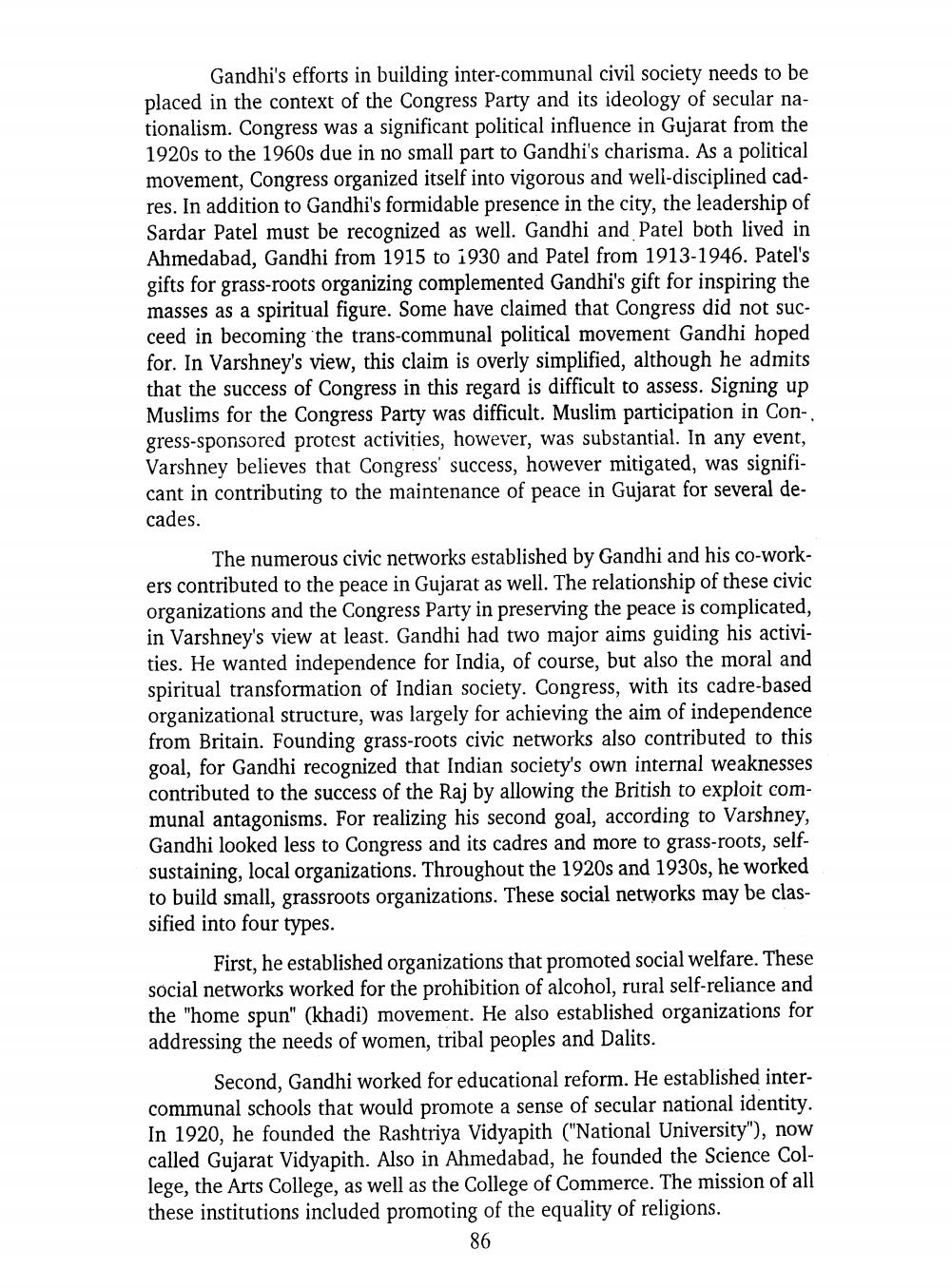________________
Gandhi's efforts in building inter-communal civil society needs to be placed in the context of the Congress Party and its ideology of secular nationalism. Congress was a significant political influence in Gujarat from the 1920s to the 1960s due in no small part to Gandhi's charisma. As a political movement, Congress organized itself into vigorous and well-disciplined cadres. In addition to Gandhi's formidable presence in the city, the leadership of Sardar Patel must be recognized as well. Gandhi and Patel both lived in Ahmedabad, Gandhi from 1915 to 1930 and Patel from 1913-1946. Patel's gifts for grass-roots organizing complemented Gandhi's gift for inspiring the masses as a spiritual figure. Some have claimed that Congress did not succeed in becoming the trans-communal political movement Gandhi hoped for. In Varshney's view, this claim is overly simplified, although he admits that the success of Congress in this regard is difficult to assess. Signing up Muslims for the Congress Party was difficult. Muslim participation in Con-. gress-sponsored protest activities, however, was substantial. In any event, Varshney believes that Congress' success, however mitigated, was significant in contributing to the maintenance of peace in Gujarat for several decades.
The numerous civic networks established by Gandhi and his co-workers contributed to the peace in Gujarat as well. The relationship of these civic organizations and the Congress Party in preserving the peace is complicated, in Varshney's view at least. Gandhi had two major aims guiding his activities. He wanted independence for India, of course, but also the moral and spiritual transformation of Indian society. Congress, with its cadre-based organizational structure, was largely for achieving the aim of independence from Britain. Founding grass-roots civic networks also contributed to this goal, for Gandhi recognized that Indian society's own internal weaknesses contributed to the success of the Raj by allowing the British to exploit communal antagonisms. For realizing his second goal, according to Varshney, Gandhi looked less to Congress and its cadres and more to grass-roots, selfsustaining, local organizations. Throughout the 1920s and 1930s, he worked to build small, grassroots organizations. These social networks may be classified into four types.
First, he established organizations that promoted social welfare. These social networks worked for the prohibition of alcohol, rural self-reliance and the "home spun" (khadi) movement. He also established organizations for addressing the needs of women, tribal peoples and Dalits.
Second, Gandhi worked for educational reform. He established intercommunal schools that would promote a sense of secular national identity. In 1920, he founded the Rashtriya Vidyapith ("National University'), now called Gujarat Vidyapith. Also in Ahmedabad, he founded the Science College, the Arts College, as well as the College of Commerce. The mission of all these institutions included promoting of the equality of religions.
86




